Community News October 2016
October 23 - 29, 2016: Issue 286
Articles This Week
Front Page Issue 286: Pittwater + Seaforth + The Harbour
Avalon Beach RSL Club’s Pikachu Triumph
Pictures: Spring Unto Summer 2016: what's flowering and becoming seeds and fruits in our bush reserves at present
Reflections by George Repin: NICHOLAS HIMONA – Artist
Aquatics: Next Phase For The Farr 40s (Pittwater One Design Trophy: 17-18 December 2016) by Lisa Ratcliff
Park Bench Philosopher: Remembrance Day 2016: War Memorials - Mona Vale, November 14, 1926
Profile: Pittwater Pinks Dragon Boat Club October is Breast Cancer Awareness Month. As one Australian doctor recently stated, among many advocates: 'Regular exercise has been demonstrated to not only hasten recovery from breast cancer treatment, but it may also reduce the risk of recurrence. Dragon boating has positive benefits on muscle strength, body composition, self-esteem, and the participants’ quality of life. Participating women also have the opportunity to form lifelong connections with other breast cancer survivors, and promote awareness of breast cancer through the community.'
Across the world there are 183 International Breast Cancer Paddlers’ Commission (IBCPC) Member Teams as of October 2016. In Australia there are 34 teams.
We have a resident chapter of this wonderful enterprise - the Pittwater Pinks Dragon Boat Club who this week help us all celebrate the 20th year of ‘Abreast In A Boat’, the team, and idea, that started it all.
History: Pittwater Fields of Dreams II: Avalon Beach Golf Course - 9 sloping greens of bliss still being maintained at its rims by voluntary Bushcarers - the beginnings of a Parks and Playgrounds movement
Artist of the Month: October 2016 Dave Whiteman - A wonderful photographer whose Landscapes,Portraits and Fashion Photography will mesmerise, Dave also flies. He recently took some lovely photos of resplendent Pittwater from her blue skies which feature on this Issue's Front Page
Search Pittwater Online News:
Mona Vale Plan Meet
Re-Scheduled
Draft Mona Vale Place Plan
Strong Wind And Big Surf Expected On NSW Coast
Northern Beaches To Get 360 Extra Bus Services
- More bus services running to and from the City and North Sydney during morning and afternoon peak times on weekdays.
- Extra trips during shoulder peak which will allow passengers to travel a little earlier or later to avoid the busiest part of the morning and afternoon.
- Extra trips in the early evenings and on weekends on some routes to meet demand for travel to major destinations such as Warringah Mall.
- Plan ahead and use the trip planner for up-to-date timetables and stop information
- Download and use real-time transport apps to track your next service
- Follow signage at bus stops
- Ask a member of staff for assistance
- All route 178 trips will be extended to start or finish at Maybrook Manor Retirement Village.
- Multiple routes will run to an adjusted timetable to improve services.
- All route 178 trips will be extended to start or finish at Maybrook Manor Retirement Village.
- Routes 136, 143, 144, 169, 178, 179, 180, L80, 184, 188, L88, 185, L85, 190 and L90 will run to an adjusted timetable to improve services
- Buses leaving the city from Carrington Street Stands E and F will now depart from Clarence Street, Stand T (before Erskine Street)
- Buses entering the City will continue to stop as normal on York Street.
- Stand C will be moved south by 10 metres.
- Stand D will be moved south by 30 metres.
- Stands E and F bus services will now depart from Clarence Street, Stand T (before Erskine Street), which is approximately three minutes walk.
Bilgola Beach Boat Carnival
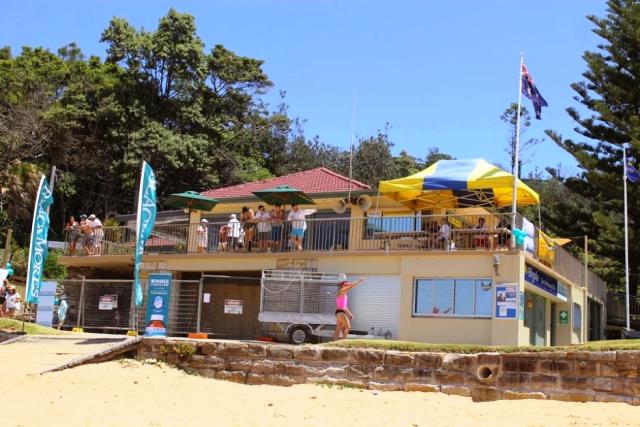
While On Surf Boats... The Rusty's Whale Encounter
 Palm Beach Whale Beach Association Updates
Palm Beach Whale Beach Association Updates

An Art Exhibition Based On The Works By Takashi Tachibana
Consultation Welcome On Draft Fifth National Mental Health Plan
- Integrated regional planning and service delivery;
- Coordinated treatment and support for people with severe and complex mental illness;
- Suicide prevention;
- Aboriginal and Torres Strait Islander mental health and suicide prevention;
- Physical health of people living with mental health issues;
- Stigma and discrimination reduction; and
- Safety and quality in mental health care.
Avalon Bulldogs JRFLC Supports Walk If Off
Mates To Walk 916km From Gold Coast To Sydney
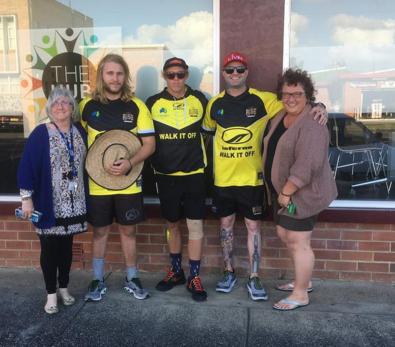

The NDIA Are Coming To Avalon!!
Warriewood Beach SLSC Masters Carnival 2016
 The 3rd Warriewood Team Carnival will take place in a fortnight.
The 3rd Warriewood Team Carnival will take place in a fortnight.Avalon Walk Survey: Have Your Say
Extra Funding For Pittwater Schools
Container Deposit Scheme Legislation Passes Parliament
WIND, BRASS AND PERCUSSION PLAYERS!!!!!
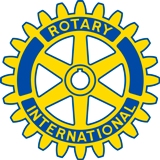 Upcoming Speakers At The Rotary Upper Northern Beaches Club
Upcoming Speakers At The Rotary Upper Northern Beaches Club
Avalon Boomerang Bags Needs More Hands
Avalon Garden Open Day
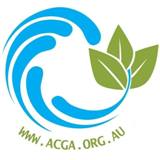 Please join us on Sunday 6th of November between 10am and 2pm to celebrate the Garden's 6th year and name change.
Please join us on Sunday 6th of November between 10am and 2pm to celebrate the Garden's 6th year and name change.Liesl Tesch To Be Inducted In Basketball Australia Hall Of Fame
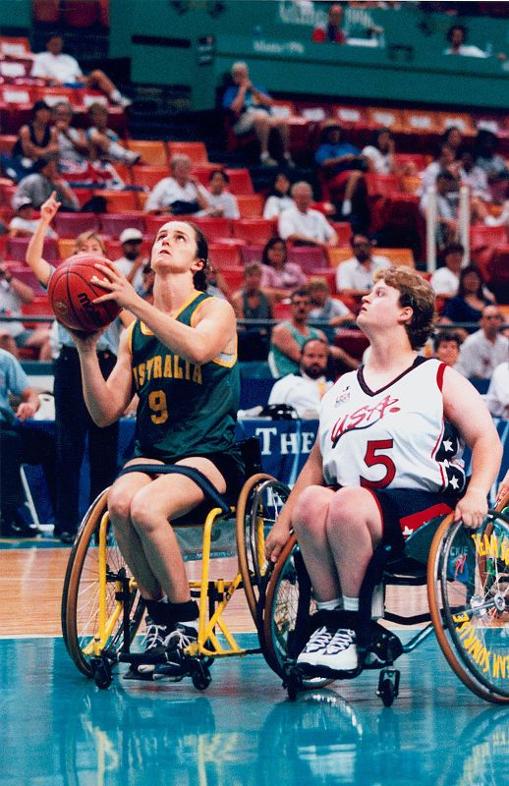
Applications Open For Illegal Dumping Clean-Up And Prevention Grants
- Over 5,000 tonnes of waste cleaned up, including over 200 tonnes of asbestos;
- 136 hotspots protected from further dumping;
- A range of preventative measures installed to deter dumping including 49 gates, 2554 meters of fencing, 23 earth mounds, 164 signs, 148 barriers and bollards, 862 tonnes of rock barrier and 111 surveillance devices;
- Increased regulatory action against illegal dumpers including 117 penalty notices, 44 clean-up notices, $100,848 in fines and $59,000 in court penalties.
- Illegal dumping clean-up and prevention projects: $50,000 - $150,000 for councils and public land managers to carry out such programs
- Establish illegal dumping baseline data: up to $20,000 for councils and public land managers
- Illegal dumping clean-up and prevention community partnerships: up to $50,000
Sydney Wildlife Rescue and Care Course
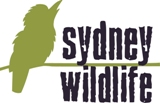 If you would like to become a member of Sydney Wildlife, joining is easy if you meet the following criteria. You must be:-
If you would like to become a member of Sydney Wildlife, joining is easy if you meet the following criteria. You must be:- Consultation On Domestic Commercial Vessels Levy
Bushfire Season 2016/17
Strata Reforms Information Sessions
Music Afternoon For Young Musicians: Scotland Island
Barrenjoey High School Seeking Alumni

Pittwater Offshore Newsletter Update 23/10/2016
click on Logo:
To contact Julian: editor@scotlandisland.org.au
Crown Land Management Bill 2016
Bayview-Church Point Residents Association Seeking Early Bayview Baths Photos

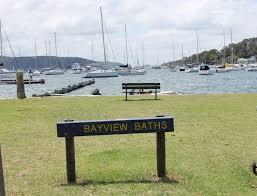 At present the BCPRA is seeking photos from residents and those from further afield on the baths.
At present the BCPRA is seeking photos from residents and those from further afield on the baths.Pittwater High School Alumni
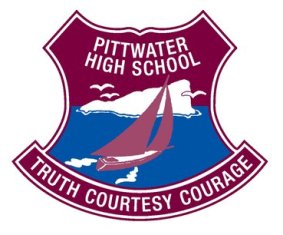 Pittwater High School
Pittwater High School Mona Vale Hospital Auxiliary Needs Kiosk Volunteers
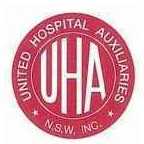 Please Contact the Kiosk Manager if you can spare a few hours a week, fortnight or month. We'd love you to join us, we're always in need of more volunteers. There are three shifts per day to choose from, weekends as well. Training provided and you are always on a shift with other volunteers, a great way to meet new friends and help towards fundraising for the hospital.
Please Contact the Kiosk Manager if you can spare a few hours a week, fortnight or month. We'd love you to join us, we're always in need of more volunteers. There are three shifts per day to choose from, weekends as well. Training provided and you are always on a shift with other volunteers, a great way to meet new friends and help towards fundraising for the hospital. 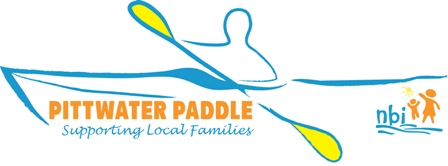
Improvements To Planning Assessment
Grey Headed Flying Foxes
All photos by photographer and (awesome) bat carer Sarah Thorpe
.jpg?timestamp=1475223696790)
You may perceive them as blind, blood-sucking, loud, smelly, flying rodents that make nests in peoples’ hair… But these adorable little creatures couldn’t be more different from that description.
Grey-headed flying foxes are the largest bats in Australia, with a wingspan of up to 1.5 metres!
They weigh between 600g and 1kg (about the weight of a pineapple). Their fancy, scientific name is Pteropus poliocephalus (if you want to impress your friends with your esteemed vocabulary).
Other members of the Pteropus family include the little red flying fox, the spectacled flying fox and the black flying fox.
Grey-headed flying foxes are the only Pteropus to have fur that reaches all the way down to their ankles, whereas other species only have fur that reaches their knees. They are also the only Australian flying fox with a reddish brown circle (or collar) of fur around their necks. Their heads are light grey and their bodies are a darker greyish black. They are estimated to live between 12 and 15 years in the wild, but in captivity they have lived as long as 25 years.
Where are they found?
.jpg?timestamp=1475223682458)
Well, you’ll be happy to hear that you can find these precious creatures all over Sydney, all year round. There are bats everywhere! The grey-headed flying foxes are furrier, so they cope better in the cooler climates, from Coffs Harbour to the South Coast. Black flying foxes range from Sydney all the way up to the warmest parts of Queensland. Spectacled flying foxes cope alright in the heat because their fur is quite short, so they are mainly located in Northern Queensland (Townsville to Cairns to Thursday Island)
Little red flying foxes migrate in huge groups and can be found all over the place, and as far West as Wagga Wagga. Though they may not be found all year round in these other places, and we’re not really sure why. It may be due to the need to migrate and find food or it may just be a seasonal thing.
They are native to Australia and definitely aren’t pests. In fact, they are a protected species and should not be intentionally harmed by any human, as this is against the law.
What is their habitat?
Grey-headed flying foxes roost together in large colonies in trees, as they are very social animals.
These trees seem to be very randomly picked, they can be in a backyard, next to a busy road, in melaleuca swamps, rainforests or in banksia woodlands. Most roosting sites are close to water sources such as lakes, rivers, or the beach.
During the day, they all sleep in the trees close together, all wrapped in their own black wings like upside-down ninjas. At night, the adults leave to find food and stretch their wings. They usually travel around 50km to feeding sites, but the longest ever recorded migration in one night was 350km! Babies that haven’t yet developed fur cling to their mother’s underside as she flies around, but older babies (about 4-5 weeks old) with all their fur are left in maternal camps to be nursed until - after about 12 weeks - they become independent.
What do they eat?
.jpg?timestamp=1475223740044)
Flying foxes are frugivores and nectarvores, meaning that they feed on fruit, pollen and nectar from flowers. While they mostly eat from native plants, they occasionally eat from introduced species as well. Their main food sources are from Eucalyptus, Melaleuca and Banksia flowers, but they eat from around 187 different plant species. Their favourite fruits are from lilli-pillies and figs.
Occasionally, the foxes eat from cultivated fruits if they can’t find other food due to habitat loss. If bats are eating from your garden, the best way to protect your fruit is to use wildlife-safe netting: www.wildlifefriendlyfencing.com and they deliver straight to your house too!
This wildlife-friendly netting has hole-spacing no wider than 4-5mm, so the bats don’t get their claws stuck in the gaps, which could lead to starvation or strangulation.
What do they do for the environment?
Bats play a critical role in pollination. When feeding, pollen gets stuck to their fur and as they move around, the pollen brushes off onto other flowers, helping them to grow more flowers. Bats also spread plant seeds throughout forests, helping to regrow damaged environments. They have a remarkably quick digestion rate of 20 minutes, so when pollen and seeds are ingested, they are quickly spread throughout the forest.
.jpg?timestamp=1475223762138)
Their role in pollination is even more important as that of birds and insects as they feed on different plants and support different plant species. Bats have the ability to migrate over vast expanses of land, and without them, the forests WILL die as the birds and insects just can’t cover enough area of the huge amounts of vegetation here in Australia.
Bats are also a key food source for animals such as pythons, goannas, birds of prey (like sea eagles) and, in other areas, crocodiles.
What threats do they face?
Sadly, bats face many issues. Grey-headed flying foxes are listed as ‘vulnerable to extinction’ on the IUCN Red List of Endangered Species. They suffer the effects of habitat loss and, as such, are often harassed or shot by farmers when they are forced to resort to eating from orchards and cultivated foods. There are estimations that over 100,000 are illegally shot every year.
Unfortunately, some farmers are given legal permission to shoot flying foxes as well, but the shooting isn’t regulated. They are legally allowed to shoot 50 bats per night, but this limit is often exceeded. The bats that do get shot often don’t die immediately and they suffer horrendous wounds and die slowly on the ground.
They are dispersed from their homes using loud noises such as banging, loud machinery, gas guns, water cannons and stock whips just because they are described as loud and smelly, which I find to be somewhat hypocritical. Babies (pups) can also be left at the site in the panic to get away and will die alone, orphaned.
They are threatened by heatwaves caused by Climate Change, as flying foxes find it very difficult to cope in warmer temperatures and can literally fall dead to the ground from heat-stress.
Since 1994, over 24,500 grey-headed flying foxes have died from extreme heat events alone.
Bats are also victims of electrocution between powerlines, which can kill both mothers and their babies clinging to them. Often the pups can survive, though, but are left badly burnt and dangle from their mother’s carcass without food or shelter. It’s important to call your local Wildlife Rescue organisation if you see a dead bat on powerlines.
Bats also face competition for food and habitat from other species such as nectar-eating birds like lorikeets.
Many bats are perceived as pests or rodents due to the fact that some bats contract viruses such as Australian Bat Lyssa Virus. The virus is highly contagious through blood and saliva and any bats who catch it die quickly. Even so, less than 1% of the bats actually get the the virus at any one time and it’s pretty obvious when they have it, due to their sluggish behaviour and other prominent symptoms. The virus can be vaccinated against and is completely preventable.
What can I do to help the bats?
There is no doubt that this species is in need of help. You can start by not supporting any bat dispersals which cause stress and death to the bats. If you have a camp of bats near you and you have a weird paranoia of getting sick from Lyssa Virus, you could consider get vaccinated. If they’re too loud and you can’t sleep at night, you could install double-pane windows and use earplugs when you sleep. If you think they smell, you could consider getting air-freshener in your house and plant lots of sweet-smelling plants in your garden.
You can donate to charities that help bats, such as Sydney Wildlife, Wires and batconservation.org or better yet, join them and help rescue and rehabilitate the injured, orphaned or sick flying foxes.
Bats are badly affected by Climate Change and you can help by not contributing to this global crisis. Don’t litter, save energy and be generally as eco-friendly as possible.
Use wildlife-friendly fruit-tree netting so animals don’t get tangled in it.
Don’t forget to encourage your friends to be aware of the problems that bats face.
Common Myths:
• Flying Foxes do not make nests out of peoples’ hair. They don’t even make nests!
• They don’t suck blood. The only bat species that sucks blood is the Vampire Bat, and they don’t drink human blood, nor do they live in Australia.
• Flying Foxes aren’t blind. In fact, they have ten-times better eyesights than humans!
• Bats are not pests. They are a vulnerable species protected by the law and are native to Australia.
• Bats don’t shriek and wail to be scary, they chat to be sociable, and their noise levels are no different to that of a room filled with people.
All in all, it can be safely said that flying foxes are some of the cutest and most valuable crittersthat Australia has to offer and certainly should not be disregarded. Join the BATtalion of flying foxlovers and keep an eye out for our fauna!
by Kayleigh Greig
Spring Into Summer Ball
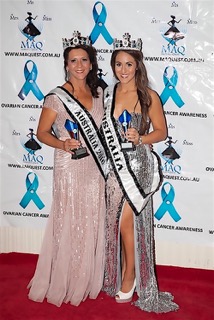
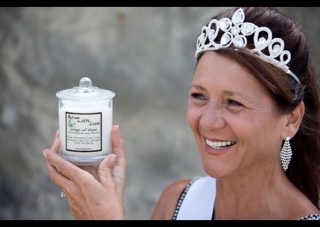
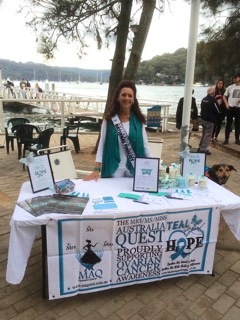
Avalon Beach Historical Society Website Relaunched
Funded Training Opportunities In 2016/17 At Northern Beaches Community College
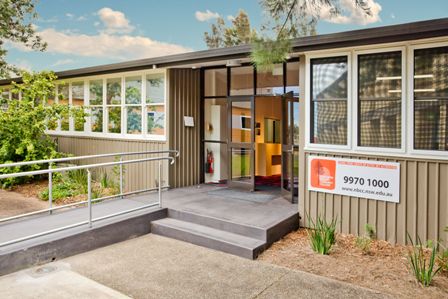

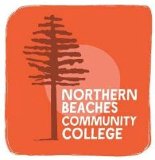 Northern Beaches Community College
Northern Beaches Community CollegePet of the Week
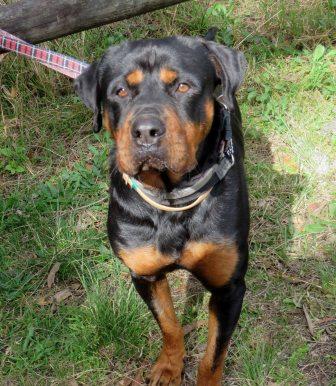
What You Need To Know Before You Movember
NSW Coastal Council
- coastal physical sciences, including geomorphology
- coastal engineering
- coastal land use planning
- coastal ecology
- social science
- economics
- local government management
- property law
- dispute resolution
- traditional and contemporary Aboriginal use and management of the coastal zone.
- provide strategic advice to the Minister, including in relation to the Minister's functions under the Coastal Management Act 2016
- assess compliance by local councils with management objectives and the coastal management manual in preparing and reviewing coastal management programs
- conduct a performance audit of the implementation of a coastal management program of a local council
- provide advice to a public authority on coastal management issues.
Whistle Blows For Opening Of Sporting Grants
Boat Trailer Storage Grants Program
- enhance the boating experience in NSW by improving the overall capacity and amenity of boating infrastructure on NSW waterways, informed by direct engagement with local boaters.
- ensure local boaters see a greater return from their registration and licence fees through improvements to local boating facilities.
- deliver projects through effective partnership arrangements with Councils and other organisations.
- deliver important projects identified through the Regional Boating Plans, not just wait for Councils to apply for funding grants.
Friends Of Bungan Beach Restoration
Bungan Beach's superb backdrop of bushland is being cared for by donations from the Pittwater Environmental Foundation (PEF) and the determination and hard work of local people who love this wonderful place. Volunteers and contractors remove weeds and plant native plants where natural regeneration is unlikely because of dense weeds for many years.
Can you lend a hand to Friends of Bungan? go tohttp://www.friendsofbungan.org.au/about-us/
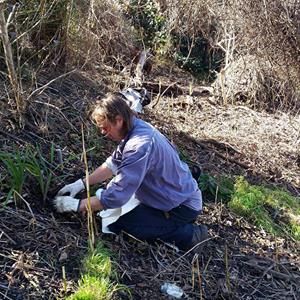
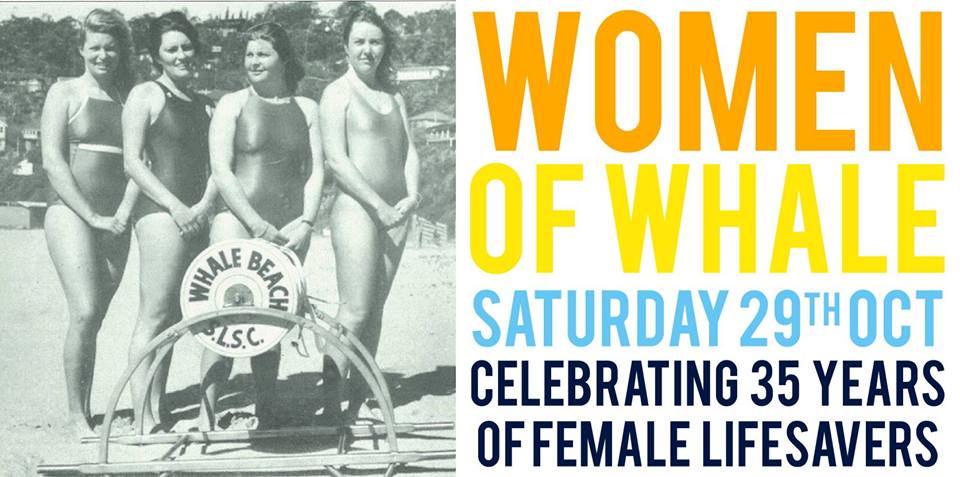
North Sydney Art Prize 2017: Call For Entries
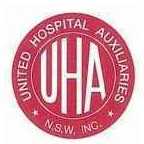 Mona Vale Hospital Auxiliary Fundraising Dates 2016
Mona Vale Hospital Auxiliary Fundraising Dates 2016
Meetings: First Tuesday of every month at Pittwater RSL Club from 10.30am to 12 noon
Membership is $5.00 per year
2016: 6th September, 4th October, 1st November, 6th December. New Members and visitors always welcome. Ring us on 9979 5115 ... or just turn up
October 28th: Stall, Warriewood Square, Warriewood Knitting, craft, sewing
November 5th: Stall, Pittwater Place, Mona Vale Craft, knitting, books
November 13th: Sausage sizzle, Narrabeen Bunnings car park
November 18th: Stall, Mona Vale Hospital foyer Baking, craft, knitting, books
December 3rd: Stall, Pittwater Place, Mona Vale Craft, knitting, books
December 3rd: Sausage sizzle, Narrabeen Bunnings car park
December 9th: Stall, Warriewood Square, Warriewood Knitting, craft, sewing
December 9th: Stall, Mona Vale Hospital foyer Baking, craft, knitting, books
Aim For The Stars Scholarships Open

Community Strategic Plan
Work Continuing On Mona Vale Road East And West Upgrade
 The purpose of www.westpittwater.com.au - is best defined by the vision of the West Pittwater Community Association.
The purpose of www.westpittwater.com.au - is best defined by the vision of the West Pittwater Community Association.
To be a supportive community, encouraging and promoting civic pride, interest in community affairs and goodwill amongst residents.
To protect local fauna and flora and generally preserve West Pittwater and its environs.
To secure essential facilities including public wharves and reserves and to protect private and public property.
To speak with one voice and represent the interests of the Western Foreshore community when in discussion with Pittwater Council and other relevant government bodies. The WPCA website provides a forum for the better realisation of these objectives. Visit: www.westpittwater.com.au
Gone Fishing Gallery at Waterfront Store Church Point
Open again TODAY in the top room Waterfront Store. Open mainly weekends as an addition to the waterfront cafe. Keep up to date on theirFacebook page
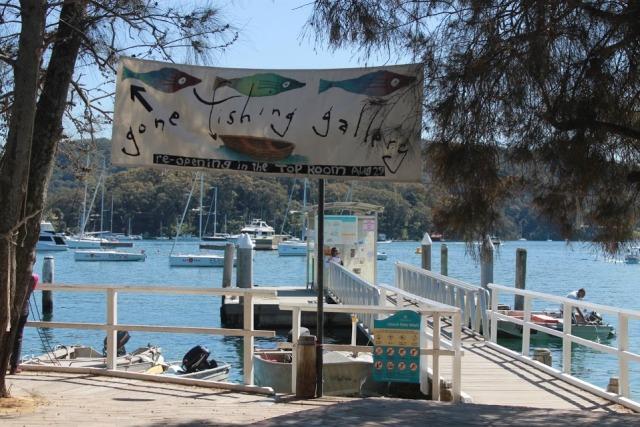
October 16 - 22, 2016: Issue 285
Articles This Week
Front Page Issue 285: Pittwater!
Mona Vale Place Plan: Have You Say By November 13, 2016 - community dismayed at draft slating six storey buildings for Mona Vale
State Of The Beaches 2015-16 Report: Northern Beaches, Estuarine and Lagoon by Beachwatch, NSW Dept. of Environment & Heritage
Wahu Surfer Groms Comp. Presented by Woolworths Lands on Sydney's Nortrhern Beaches by Surfing NSW
Scotland Island RFB Members Awarded Long Service Medals: 180 Years Of Doing
Land Army Women's Reunion Group Spring Luncheon 2016 by Doreen Cherry OAM
Auric’s Quest For Pittwater To Southport Honours by Lisa Ratcliff
The Royal Prince Alfred Yacht Club Sesquicentenary Welcoming Sculpture By John Woulfe Unveiled - by Stephen Collopy
Aquatics: Couta Week Returns To Pittwater by Lisa Ratcliff
Pictures: Sydney Wildlife Mobile Clinic Fundraiser at Bayview
DIY Ideas: DIY Sandstone Flagging Parking Area - Platform - if you have a muddy parking area and the green grass on either side has gone - this will be something to keep the natural look in your garden and stop the mud
Food: Something Sweet At Pronto's Creative Food - Palm Beach: the best cakes, all that take hours to make, can be bought by the slice or whole at Prontos - with a great Spring Fare savoury menu now available - it's time to revisit this Palm Beach icon.
Profile: Narrabeen RSL Fishing Club This week we share a small insight into the third fishing club located within the Pittwater area, who, alike their Newport Arms and Avalon Beach RSL Fishing clubs counterparts, are the nicest most laid-back group of family focussed people you will meet.
History: Pittwater Fields of Dreams II: Avalon Beach Golf Course - 9 sloping greens of bliss still being maintained at its rims by voluntary Bushcarers - the beginnings of a Parks and Playgrounds movement
Artist of the Month: October 2016 Dave Whiteman - A wonderful photographer whose Landscapes,Portraits and Fashion Photography will mesmerise, Dave also flies. He recently took some lovely photos of resplendent Pittwater from her blue skies which feature on this Issue's Front Page
Search Pittwater Online News:
Mona Vale Plan Meet
Re-Scheduled
Draft Mona Vale Place Plan
MCCARRS CREEK ROAD CLOSURE
Surf Club Open Day Is On Today
Congratulations!
Falinski Calls For More Disaster Relief Funding
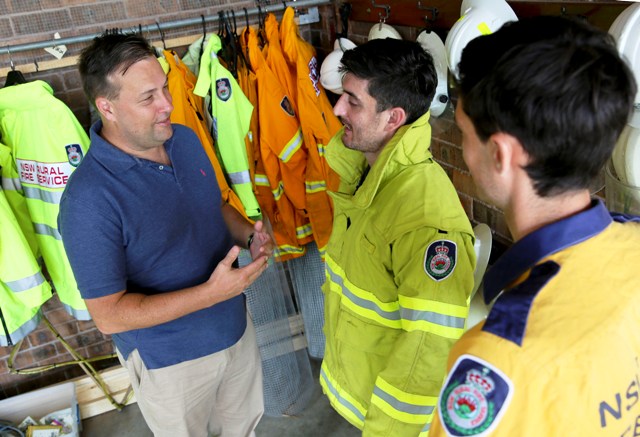
Avalon Bulldogs JRFLC Supports Walk If Off
Mates To Walk 916km From Gold Coast To Sydney


Fashion Parade For Mona Vale Hospital: Tuesday
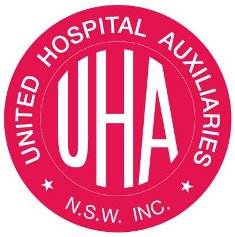 The Mona Vale Hospital Auxiliary will be having a fund raising fashion parade onTuesday, October 18th at Newport Bowling Club, cnr Palm and Barrenjoey Roads. Morning tea is at 10.30am followed by the Donna Lou affordable fashions parade. There are raffles and lucky door prizes and funds raised will help to purchase equipment for the hospital and rehabilitation units.
The Mona Vale Hospital Auxiliary will be having a fund raising fashion parade onTuesday, October 18th at Newport Bowling Club, cnr Palm and Barrenjoey Roads. Morning tea is at 10.30am followed by the Donna Lou affordable fashions parade. There are raffles and lucky door prizes and funds raised will help to purchase equipment for the hospital and rehabilitation units.Bushfire Season 2016/17
Elanora Players 50th Celebratory Play Success

Sydney Wildlife Rescue and Care Course
 If you would like to become a member of Sydney Wildlife, joining is easy if you meet the following criteria. You must be:-
If you would like to become a member of Sydney Wildlife, joining is easy if you meet the following criteria. You must be:- Music Afternoon For Young Musicians: Scotland Island
Barrenjoey High School Seeking Alumni

Pittwater Offshore Newsletter Update 16/10/2016
click on Logo:
To contact Julian: editor@scotlandisland.org.au
What You Need To Know Before You Movember
Overshadowing Of Mona Vale’s Village Green
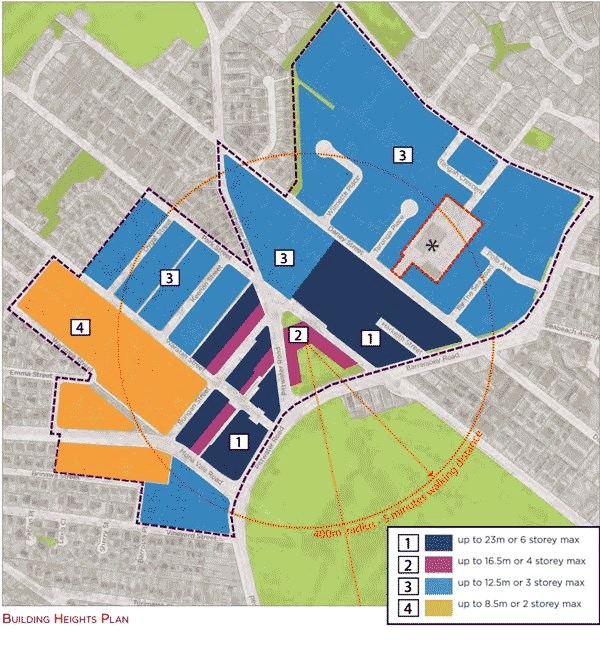
Bayview-Church Point Residents Association Seeking Early Bayview Baths Photos

 At present the BCPRA is seeking photos from residents and those from further afield on the baths.
At present the BCPRA is seeking photos from residents and those from further afield on the baths.Pittwater High School Alumni
 Pittwater High School
Pittwater High School Pittwater High School Reunion
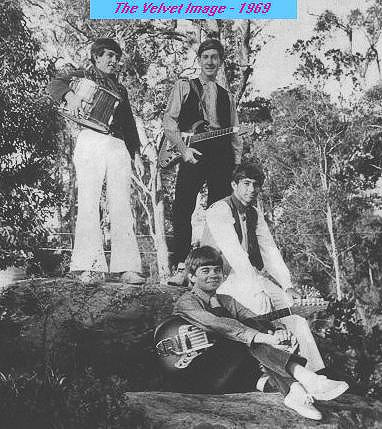
Mona Vale Hospital Auxiliary Needs Kiosk Volunteers
 Please Contact the Kiosk Manager if you can spare a few hours a week, fortnight or month. We'd love you to join us, we're always in need of more volunteers. There are three shifts per day to choose from, weekends as well. Training provided and you are always on a shift with other volunteers, a great way to meet new friends and help towards fundraising for the hospital.
Please Contact the Kiosk Manager if you can spare a few hours a week, fortnight or month. We'd love you to join us, we're always in need of more volunteers. There are three shifts per day to choose from, weekends as well. Training provided and you are always on a shift with other volunteers, a great way to meet new friends and help towards fundraising for the hospital. 
Friends Of Bungan Beach Restoration
Bungan Beach's superb backdrop of bushland is being cared for by donations from the Pittwater Environmental Foundation (PEF) and the determination and hard work of local people who love this wonderful place. Volunteers and contractors remove weeds and plant native plants where natural regeneration is unlikely because of dense weeds for many years.
Can you lend a hand to Friends of Bungan? go tohttp://www.friendsofbungan.org.au/about-us/


Grey Headed Flying Foxes
All photos by photographer and (awesome) bat carer Sarah Thorpe
.jpg?timestamp=1475223696790)
You may perceive them as blind, blood-sucking, loud, smelly, flying rodents that make nests in peoples’ hair… But these adorable little creatures couldn’t be more different from that description.
Grey-headed flying foxes are the largest bats in Australia, with a wingspan of up to 1.5 metres!
They weigh between 600g and 1kg (about the weight of a pineapple). Their fancy, scientific name is Pteropus poliocephalus (if you want to impress your friends with your esteemed vocabulary).
Other members of the Pteropus family include the little red flying fox, the spectacled flying fox and the black flying fox.
Grey-headed flying foxes are the only Pteropus to have fur that reaches all the way down to their ankles, whereas other species only have fur that reaches their knees. They are also the only Australian flying fox with a reddish brown circle (or collar) of fur around their necks. Their heads are light grey and their bodies are a darker greyish black. They are estimated to live between 12 and 15 years in the wild, but in captivity they have lived as long as 25 years.
Where are they found?
.jpg?timestamp=1475223682458)
Well, you’ll be happy to hear that you can find these precious creatures all over Sydney, all year round. There are bats everywhere! The grey-headed flying foxes are furrier, so they cope better in the cooler climates, from Coffs Harbour to the South Coast. Black flying foxes range from Sydney all the way up to the warmest parts of Queensland. Spectacled flying foxes cope alright in the heat because their fur is quite short, so they are mainly located in Northern Queensland (Townsville to Cairns to Thursday Island)
Little red flying foxes migrate in huge groups and can be found all over the place, and as far West as Wagga Wagga. Though they may not be found all year round in these other places, and we’re not really sure why. It may be due to the need to migrate and find food or it may just be a seasonal thing.
They are native to Australia and definitely aren’t pests. In fact, they are a protected species and should not be intentionally harmed by any human, as this is against the law.
What is their habitat?
Grey-headed flying foxes roost together in large colonies in trees, as they are very social animals.
These trees seem to be very randomly picked, they can be in a backyard, next to a busy road, in melaleuca swamps, rainforests or in banksia woodlands. Most roosting sites are close to water sources such as lakes, rivers, or the beach.
During the day, they all sleep in the trees close together, all wrapped in their own black wings like upside-down ninjas. At night, the adults leave to find food and stretch their wings. They usually travel around 50km to feeding sites, but the longest ever recorded migration in one night was 350km! Babies that haven’t yet developed fur cling to their mother’s underside as she flies around, but older babies (about 4-5 weeks old) with all their fur are left in maternal camps to be nursed until - after about 12 weeks - they become independent.
What do they eat?
.jpg?timestamp=1475223740044)
Flying foxes are frugivores and nectarvores, meaning that they feed on fruit, pollen and nectar from flowers. While they mostly eat from native plants, they occasionally eat from introduced species as well. Their main food sources are from Eucalyptus, Melaleuca and Banksia flowers, but they eat from around 187 different plant species. Their favourite fruits are from lilli-pillies and figs.
Occasionally, the foxes eat from cultivated fruits if they can’t find other food due to habitat loss. If bats are eating from your garden, the best way to protect your fruit is to use wildlife-safe netting: www.wildlifefriendlyfencing.com and they deliver straight to your house too!
This wildlife-friendly netting has hole-spacing no wider than 4-5mm, so the bats don’t get their claws stuck in the gaps, which could lead to starvation or strangulation.
What do they do for the environment?
Bats play a critical role in pollination. When feeding, pollen gets stuck to their fur and as they move around, the pollen brushes off onto other flowers, helping them to grow more flowers. Bats also spread plant seeds throughout forests, helping to regrow damaged environments. They have a remarkably quick digestion rate of 20 minutes, so when pollen and seeds are ingested, they are quickly spread throughout the forest.
.jpg?timestamp=1475223762138)
Their role in pollination is even more important as that of birds and insects as they feed on different plants and support different plant species. Bats have the ability to migrate over vast expanses of land, and without them, the forests WILL die as the birds and insects just can’t cover enough area of the huge amounts of vegetation here in Australia.
Bats are also a key food source for animals such as pythons, goannas, birds of prey (like sea eagles) and, in other areas, crocodiles.
What threats do they face?
Sadly, bats face many issues. Grey-headed flying foxes are listed as ‘vulnerable to extinction’ on the IUCN Red List of Endangered Species. They suffer the effects of habitat loss and, as such, are often harassed or shot by farmers when they are forced to resort to eating from orchards and cultivated foods. There are estimations that over 100,000 are illegally shot every year.
Unfortunately, some farmers are given legal permission to shoot flying foxes as well, but the shooting isn’t regulated. They are legally allowed to shoot 50 bats per night, but this limit is often exceeded. The bats that do get shot often don’t die immediately and they suffer horrendous wounds and die slowly on the ground.
They are dispersed from their homes using loud noises such as banging, loud machinery, gas guns, water cannons and stock whips just because they are described as loud and smelly, which I find to be somewhat hypocritical. Babies (pups) can also be left at the site in the panic to get away and will die alone, orphaned.
They are threatened by heatwaves caused by Climate Change, as flying foxes find it very difficult to cope in warmer temperatures and can literally fall dead to the ground from heat-stress.
Since 1994, over 24,500 grey-headed flying foxes have died from extreme heat events alone.
Bats are also victims of electrocution between powerlines, which can kill both mothers and their babies clinging to them. Often the pups can survive, though, but are left badly burnt and dangle from their mother’s carcass without food or shelter. It’s important to call your local Wildlife Rescue organisation if you see a dead bat on powerlines.
Bats also face competition for food and habitat from other species such as nectar-eating birds like lorikeets.
Many bats are perceived as pests or rodents due to the fact that some bats contract viruses such as Australian Bat Lyssa Virus. The virus is highly contagious through blood and saliva and any bats who catch it die quickly. Even so, less than 1% of the bats actually get the the virus at any one time and it’s pretty obvious when they have it, due to their sluggish behaviour and other prominent symptoms. The virus can be vaccinated against and is completely preventable.
What can I do to help the bats?
There is no doubt that this species is in need of help. You can start by not supporting any bat dispersals which cause stress and death to the bats. If you have a camp of bats near you and you have a weird paranoia of getting sick from Lyssa Virus, you could consider get vaccinated. If they’re too loud and you can’t sleep at night, you could install double-pane windows and use earplugs when you sleep. If you think they smell, you could consider getting air-freshener in your house and plant lots of sweet-smelling plants in your garden.
You can donate to charities that help bats, such as Sydney Wildlife, Wires and batconservation.org or better yet, join them and help rescue and rehabilitate the injured, orphaned or sick flying foxes.
Bats are badly affected by Climate Change and you can help by not contributing to this global crisis. Don’t litter, save energy and be generally as eco-friendly as possible.
Use wildlife-friendly fruit-tree netting so animals don’t get tangled in it.
Don’t forget to encourage your friends to be aware of the problems that bats face.
Common Myths:
• Flying Foxes do not make nests out of peoples’ hair. They don’t even make nests!
• They don’t suck blood. The only bat species that sucks blood is the Vampire Bat, and they don’t drink human blood, nor do they live in Australia.
• Flying Foxes aren’t blind. In fact, they have ten-times better eyesights than humans!
• Bats are not pests. They are a vulnerable species protected by the law and are native to Australia.
• Bats don’t shriek and wail to be scary, they chat to be sociable, and their noise levels are no different to that of a room filled with people.
All in all, it can be safely said that flying foxes are some of the cutest and most valuable crittersthat Australia has to offer and certainly should not be disregarded. Join the BATtalion of flying foxlovers and keep an eye out for our fauna!
by Kayleigh Greig
 Mona Vale Hospital Auxiliary Fundraising Dates 2016
Mona Vale Hospital Auxiliary Fundraising Dates 2016
Meetings: First Tuesday of every month at Pittwater RSL Club from 10.30am to 12 noon
Membership is $5.00 per year
2016: 6th September, 4th October, 1st November, 6th December. New Members and visitors always welcome. Ring us on 9979 5115 ... or just turn up
Tuesday, October 18th, 2016. Fundraising fashion parade at Newport Bowling Club, cnr Palm and Barrenjoey Roads. Morning tea is at 10.30am followed by a Donna Lou affordable fashions parade. Raffles and lucky door prizes. $10 entry and all are welcome. Funds raised will purchase equipment for the Mona Vale Hospital and Rehabilitation centres.
October 21st: Mona Vale Hospital foyer Baking, craft, knitting, books
October 28th: Stall, Warriewood Square, Warriewood Knitting, craft, sewing
November 5th: Stall, Pittwater Place, Mona Vale Craft, knitting, books
November 13th: Sausage sizzle, Narrabeen Bunnings car park
November 18th: Stall, Mona Vale Hospital foyer Baking, craft, knitting, books
December 3rd: Stall, Pittwater Place, Mona Vale Craft, knitting, books
December 3rd: Sausage sizzle, Narrabeen Bunnings car park
December 9th: Stall, Warriewood Square, Warriewood Knitting, craft, sewing
December 9th: Stall, Mona Vale Hospital foyer Baking, craft, knitting, books
Making It Easier To Build Terrace Houses
The NDIA Are Coming To Avalon!!
Spring Into Summer Ball



Strata Reforms Information Sessions
Whistle Blows For Opening Of Sporting Grants
NSW Coastal Council
- coastal physical sciences, including geomorphology
- coastal engineering
- coastal land use planning
- coastal ecology
- social science
- economics
- local government management
- property law
- dispute resolution
- traditional and contemporary Aboriginal use and management of the coastal zone.
- provide strategic advice to the Minister, including in relation to the Minister's functions under the Coastal Management Act 2016
- assess compliance by local councils with management objectives and the coastal management manual in preparing and reviewing coastal management programs
- conduct a performance audit of the implementation of a coastal management program of a local council
- provide advice to a public authority on coastal management issues.
Boat Trailer Storage Grants Program
- enhance the boating experience in NSW by improving the overall capacity and amenity of boating infrastructure on NSW waterways, informed by direct engagement with local boaters.
- ensure local boaters see a greater return from their registration and licence fees through improvements to local boating facilities.
- deliver projects through effective partnership arrangements with Councils and other organisations.
- deliver important projects identified through the Regional Boating Plans, not just wait for Councils to apply for funding grants.
North Sydney Art Prize 2017: Call For Entries
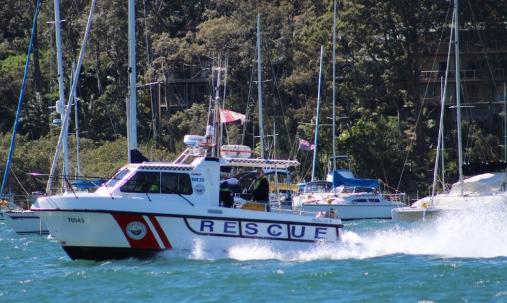
Marine Rescue Summer Checklist For Your Boat Or Trailer
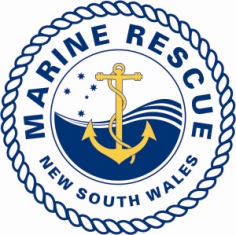 With the onset of spring a number of craft will be brought out of hibernation for the first time this year.
With the onset of spring a number of craft will be brought out of hibernation for the first time this year.Community Strategic Plan
Work Continuing On Mona Vale Road East And West Upgrade
Bush Fire Bulletin Archive Now Online
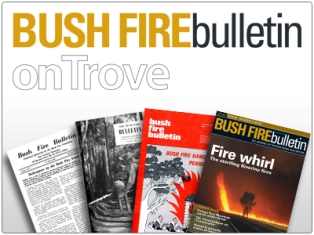
Funded Training Opportunities In 2016/17 At Northern Beaches Community College


 Northern Beaches Community College
Northern Beaches Community CollegeBonnie Boezeman AO To Be Guest Speaker At Zonta “Empowering Women” Dinner
 The Zonta Club of Northern Beaches Inc, with the Mackellar Girls ZClub, will host the annual “Empowering Women” Dinner on Thursday 20 October at the Dee Why RSL Club. The guest speaker will be Bonnie Boezeman AO.
The Zonta Club of Northern Beaches Inc, with the Mackellar Girls ZClub, will host the annual “Empowering Women” Dinner on Thursday 20 October at the Dee Why RSL Club. The guest speaker will be Bonnie Boezeman AO.Flare Demonstration
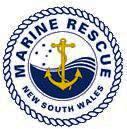 Marine Rescue Broken Bay Unit will be conducting a Flare Demonstration at Marine Rescue Broken Bay. Saturday 22nd October at 9am at Marine Rescue, Rowland Reserve, Bayview.
Marine Rescue Broken Bay Unit will be conducting a Flare Demonstration at Marine Rescue Broken Bay. Saturday 22nd October at 9am at Marine Rescue, Rowland Reserve, Bayview.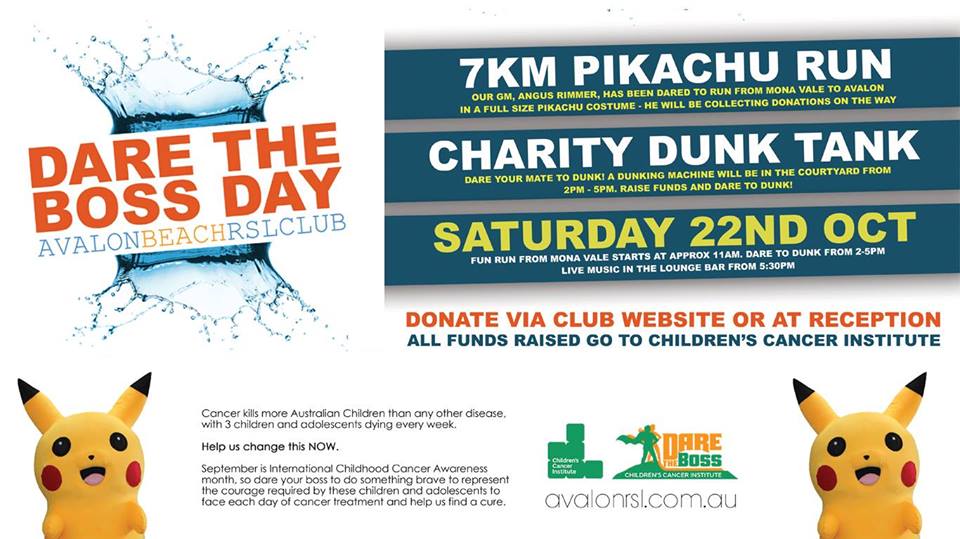
Avalon Craft Cottage
Pet of the Week

 The purpose of www.westpittwater.com.au - is best defined by the vision of the West Pittwater Community Association.
The purpose of www.westpittwater.com.au - is best defined by the vision of the West Pittwater Community Association.
To be a supportive community, encouraging and promoting civic pride, interest in community affairs and goodwill amongst residents.
To protect local fauna and flora and generally preserve West Pittwater and its environs.
To secure essential facilities including public wharves and reserves and to protect private and public property.
To speak with one voice and represent the interests of the Western Foreshore community when in discussion with Pittwater Council and other relevant government bodies. The WPCA website provides a forum for the better realisation of these objectives. Visit: www.westpittwater.com.au
Gone Fishing Gallery at Waterfront Store Church Point
Open again TODAY in the top room Waterfront Store. Open mainly weekends as an addition to the waterfront cafe. Keep up to date on theirFacebook page

October 9 - 15, 2016: Issue 284
Articles This Week
Front Page Issue 284: Pittwater!
Sydney Water Prospects Make A Splash: 2016 Junior Development Academy Sydney Northern Beaches Representatives by SLS NSW
MC38s Light-Up On Heavy Air Pittwater Day: Act 1 of 2016/17 Summer Series Championship by Lisa Ratcliff
Reflections by George Repin: ZION NATIONAL PARK
Aquatics: Lock Crowther Regatta 2016: Results and Interviews
Pictures: Lion Island Challenge 2016: Results and Interviews
Park Bench Philosopher: Taronga Zoo 100th Birthday Parade: 1000 Reasons To Celebrate- how this all began, from 1911 on...
Profile: Avalon Computer Pals (AvPals) Newport Classes for Term 4 commence October 18 with Introductory ipad classes - a small insight this week into one on one tutors and all the great range of ever evolving technology being shared by Seniors and for Seniors - keep on Interneting!
History: Pittwater Heroes and Heroines I: Dr. Isobel Ida Bennett AOwas one of Australia's best-known marine biologists. She assisted Prof. William John Dakin with research for his final book, Australian Seashores, regarded by many as "the definitive guide on the inter-tidal zone, and a recommended source of information to divers".
Artist of the Month: October 2016 Dave Whiteman - A wonderful photographer whose Landscapes,Portraits and Fashion Photography will mesmerise, Dave also flies. He recently took some lovely photos of resplendent Pittwater from her blue skies which feature on this Issue's Front Page
Search Pittwater Online News:
Dear Editor,
The NDIA Are Coming To Avalon!!
Strata Reforms Information Sessions
Whistle Blows For Opening Of Sporting Grants
Pittwater Offshore Newsletter Update 8/10/2016
click on Logo:
To contact Julian: editor@scotlandisland.org.au
Pittwater Mens Probus Club October 2016 Speaker
 A 31 year veteran of the NSW Police Force, Deborah will take us on an extraordinary journey of her “Life in Crime” from her days as a Constable in Blacktown to Detective Superintendent in the South East Asian Crime Squad, the Middle Eastern Organised Crime Squad and the Gangs Squad.
A 31 year veteran of the NSW Police Force, Deborah will take us on an extraordinary journey of her “Life in Crime” from her days as a Constable in Blacktown to Detective Superintendent in the South East Asian Crime Squad, the Middle Eastern Organised Crime Squad and the Gangs Squad.Lion Island Challenge 2016 Hosted By Avalon Beach SLSC
 Warriewood SLSC
Warriewood SLSC
Nippers Information Evening
Bushfire Season 2016/17
Music Afternoon For Young Musicians: Scotland Island
JBH Mitre 10 BeyondBlue Fundraiser Success

Update Google Chrome To Minimise Security Risks
Floating Landcare In The Pittwater/ Hawkesbury Area
Overshadowing Of Mona Vale’s Village Green

Draft Mona Vale Place Plan
Bayview-Church Point Residents Association Seeking Bayview Baths Photos
 At present they’re seeking photos from residents and those from further afield on the baths.
At present they’re seeking photos from residents and those from further afield on the baths.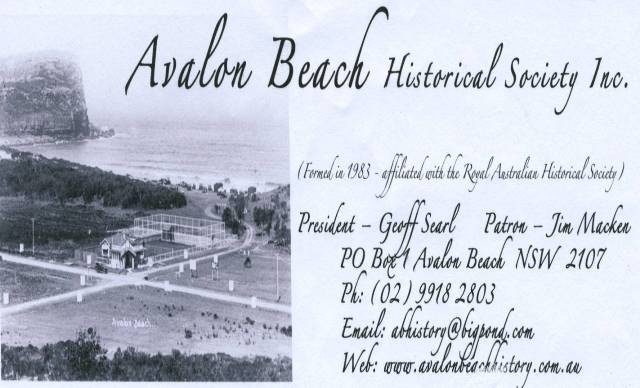
Pittwater High School Alumni
 Pittwater High School
Pittwater High School Pittwater High School Reunion

Mona Vale Hospital Auxiliary Needs Kiosk Volunteers
 Please Contact the Kiosk Manager if you can spare a few hours a week, fortnight or month. We'd love you to join us, we're always in need of more volunteers. There are three shifts per day to choose from, weekends as well. Training provided and you are always on a shift with other volunteers, a great way to meet new friends and help towards fundraising for the hospital.
Please Contact the Kiosk Manager if you can spare a few hours a week, fortnight or month. We'd love you to join us, we're always in need of more volunteers. There are three shifts per day to choose from, weekends as well. Training provided and you are always on a shift with other volunteers, a great way to meet new friends and help towards fundraising for the hospital. Fashion Parade For Mona Vale Hospital
Spring Into Summer Ball
Superannuation Reform: Second Tranche Of Exposure Draft

Friends Of Bungan Beach Restoration
Bungan Beach's superb backdrop of bushland is being cared for by donations from the Pittwater Environmental Foundation (PEF) and the determination and hard work of local people who love this wonderful place. Volunteers and contractors remove weeds and plant native plants where natural regeneration is unlikely because of dense weeds for many years.
Can you lend a hand to Friends of Bungan? go tohttp://www.friendsofbungan.org.au/about-us/

Twilight Bazaar At Bayview
Review Of Local Government Rating System

Grey Headed Flying Foxes
All photos by photographer and (awesome) bat carer Sarah Thorpe
.jpg?timestamp=1475223696790)
You may perceive them as blind, blood-sucking, loud, smelly, flying rodents that make nests in peoples’ hair… But these adorable little creatures couldn’t be more different from that description.
Grey-headed flying foxes are the largest bats in Australia, with a wingspan of up to 1.5 metres!
They weigh between 600g and 1kg (about the weight of a pineapple). Their fancy, scientific name is Pteropus poliocephalus (if you want to impress your friends with your esteemed vocabulary).
Other members of the Pteropus family include the little red flying fox, the spectacled flying fox and the black flying fox.
Grey-headed flying foxes are the only Pteropus to have fur that reaches all the way down to their ankles, whereas other species only have fur that reaches their knees. They are also the only Australian flying fox with a reddish brown circle (or collar) of fur around their necks. Their heads are light grey and their bodies are a darker greyish black. They are estimated to live between 12 and 15 years in the wild, but in captivity they have lived as long as 25 years.
Where are they found?
.jpg?timestamp=1475223682458)
Well, you’ll be happy to hear that you can find these precious creatures all over Sydney, all year round. There are bats everywhere! The grey-headed flying foxes are furrier, so they cope better in the cooler climates, from Coffs Harbour to the South Coast. Black flying foxes range from Sydney all the way up to the warmest parts of Queensland. Spectacled flying foxes cope alright in the heat because their fur is quite short, so they are mainly located in Northern Queensland (Townsville to Cairns to Thursday Island)
Little red flying foxes migrate in huge groups and can be found all over the place, and as far West as Wagga Wagga. Though they may not be found all year round in these other places, and we’re not really sure why. It may be due to the need to migrate and find food or it may just be a seasonal thing.
They are native to Australia and definitely aren’t pests. In fact, they are a protected species and should not be intentionally harmed by any human, as this is against the law.
What is their habitat?
Grey-headed flying foxes roost together in large colonies in trees, as they are very social animals.
These trees seem to be very randomly picked, they can be in a backyard, next to a busy road, in melaleuca swamps, rainforests or in banksia woodlands. Most roosting sites are close to water sources such as lakes, rivers, or the beach.
During the day, they all sleep in the trees close together, all wrapped in their own black wings like upside-down ninjas. At night, the adults leave to find food and stretch their wings. They usually travel around 50km to feeding sites, but the longest ever recorded migration in one night was 350km! Babies that haven’t yet developed fur cling to their mother’s underside as she flies around, but older babies (about 4-5 weeks old) with all their fur are left in maternal camps to be nursed until - after about 12 weeks - they become independent.
What do they eat?
.jpg?timestamp=1475223740044)
Flying foxes are frugivores and nectarvores, meaning that they feed on fruit, pollen and nectar from flowers. While they mostly eat from native plants, they occasionally eat from introduced species as well. Their main food sources are from Eucalyptus, Melaleuca and Banksia flowers, but they eat from around 187 different plant species. Their favourite fruits are from lilli-pillies and figs.
Occasionally, the foxes eat from cultivated fruits if they can’t find other food due to habitat loss. If bats are eating from your garden, the best way to protect your fruit is to use wildlife-safe netting: www.wildlifefriendlyfencing.com and they deliver straight to your house too!
This wildlife-friendly netting has hole-spacing no wider than 4-5mm, so the bats don’t get their claws stuck in the gaps, which could lead to starvation or strangulation.
What do they do for the environment?
Bats play a critical role in pollination. When feeding, pollen gets stuck to their fur and as they move around, the pollen brushes off onto other flowers, helping them to grow more flowers. Bats also spread plant seeds throughout forests, helping to regrow damaged environments. They have a remarkably quick digestion rate of 20 minutes, so when pollen and seeds are ingested, they are quickly spread throughout the forest.
.jpg?timestamp=1475223762138)
Their role in pollination is even more important as that of birds and insects as they feed on different plants and support different plant species. Bats have the ability to migrate over vast expanses of land, and without them, the forests WILL die as the birds and insects just can’t cover enough area of the huge amounts of vegetation here in Australia.
Bats are also a key food source for animals such as pythons, goannas, birds of prey (like sea eagles) and, in other areas, crocodiles.
What threats do they face?
Sadly, bats face many issues. Grey-headed flying foxes are listed as ‘vulnerable to extinction’ on the IUCN Red List of Endangered Species. They suffer the effects of habitat loss and, as such, are often harassed or shot by farmers when they are forced to resort to eating from orchards and cultivated foods. There are estimations that over 100,000 are illegally shot every year.
Unfortunately, some farmers are given legal permission to shoot flying foxes as well, but the shooting isn’t regulated. They are legally allowed to shoot 50 bats per night, but this limit is often exceeded. The bats that do get shot often don’t die immediately and they suffer horrendous wounds and die slowly on the ground.
They are dispersed from their homes using loud noises such as banging, loud machinery, gas guns, water cannons and stock whips just because they are described as loud and smelly, which I find to be somewhat hypocritical. Babies (pups) can also be left at the site in the panic to get away and will die alone, orphaned.
They are threatened by heatwaves caused by Climate Change, as flying foxes find it very difficult to cope in warmer temperatures and can literally fall dead to the ground from heat-stress.
Since 1994, over 24,500 grey-headed flying foxes have died from extreme heat events alone.
Bats are also victims of electrocution between powerlines, which can kill both mothers and their babies clinging to them. Often the pups can survive, though, but are left badly burnt and dangle from their mother’s carcass without food or shelter. It’s important to call your local Wildlife Rescue organisation if you see a dead bat on powerlines.
Bats also face competition for food and habitat from other species such as nectar-eating birds like lorikeets.
Many bats are perceived as pests or rodents due to the fact that some bats contract viruses such as Australian Bat Lyssa Virus. The virus is highly contagious through blood and saliva and any bats who catch it die quickly. Even so, less than 1% of the bats actually get the the virus at any one time and it’s pretty obvious when they have it, due to their sluggish behaviour and other prominent symptoms. The virus can be vaccinated against and is completely preventable.
What can I do to help the bats?
There is no doubt that this species is in need of help. You can start by not supporting any bat dispersals which cause stress and death to the bats. If you have a camp of bats near you and you have a weird paranoia of getting sick from Lyssa Virus, you could consider get vaccinated. If they’re too loud and you can’t sleep at night, you could install double-pane windows and use earplugs when you sleep. If you think they smell, you could consider getting air-freshener in your house and plant lots of sweet-smelling plants in your garden.
You can donate to charities that help bats, such as Sydney Wildlife, Wires and batconservation.org or better yet, join them and help rescue and rehabilitate the injured, orphaned or sick flying foxes.
Bats are badly affected by Climate Change and you can help by not contributing to this global crisis. Don’t litter, save energy and be generally as eco-friendly as possible.
Use wildlife-friendly fruit-tree netting so animals don’t get tangled in it.
Don’t forget to encourage your friends to be aware of the problems that bats face.
Common Myths:
• Flying Foxes do not make nests out of peoples’ hair. They don’t even make nests!
• They don’t suck blood. The only bat species that sucks blood is the Vampire Bat, and they don’t drink human blood, nor do they live in Australia.
• Flying Foxes aren’t blind. In fact, they have ten-times better eyesights than humans!
• Bats are not pests. They are a vulnerable species protected by the law and are native to Australia.
• Bats don’t shriek and wail to be scary, they chat to be sociable, and their noise levels are no different to that of a room filled with people.
All in all, it can be safely said that flying foxes are some of the cutest and most valuable crittersthat Australia has to offer and certainly should not be disregarded. Join the BATtalion of flying foxlovers and keep an eye out for our fauna!
by Kayleigh Greig
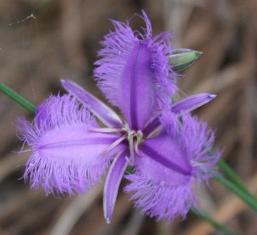 Bushcare in Pittwater
Bushcare in Pittwater
For further information or to confirm the meeting details for below groups, please contact Council's Bushcare Officer on 9970 1367
Where we work Which day What time
Avalon
Angophora Reserve 3rd Sunday 8:30 - 11:30am
Avalon Dunes 1st Sunday 8:30 - 11:30am
Avalon Golf Course 2nd Wednesday 3 - 5:30pm
Careel Creek 4th Saturday 8:30 - 11:30am
Toongari Reserve 3rd Saturday 9 - 12noon (8 - 11am in summer)
Bangalley Headland 2nd Sunday 9 to 12noon
Bayview
Winnererremy Bay 4th Sunday 9 to 12noon
Bilgola
North Bilgola Beach 3rd Monday 9 - 12noon
Algona Reserve 1st Saturday 9 - 12noon
Plateau Park 1st Friday 8:30 - 11:30am
Church Point
Browns Bay Reserve 1st Tuesday 9 - 12noon
McCarrs Creek Reserve Contact Bushcare Officer To be confirmed
Clareville
Old Wharf Reserve 3rd Saturday 8 - 11am
Elanora
Kundibah Reserve 4th Sunday 8:30 - 11:30am
Mona Vale
Mona Vale Beach Basin 1st Saturday 8 - 11am
Mona Vale Dunes 2nd Saturday+3rd Thursday 8:30 - 11:30am
Newport
Bungan Beach 4th Sunday 9 - 12noon
Crescent Reserve 3rd Sunday 9 - 12noon
North Newport Beach 4th Saturday 8:30 - 11:30am
Porter Reserve 2nd Saturday 8 - 11am
North Narrabeen
Irrawong Reserve 3rd Saturday 2 - 5pm
Palm Beach
North Palm Beach Dunes 3rd Saturday 9 - 12noon
Scotland Island
Catherine Park 2nd Sunday 10 - 12:30pm
Elizabeth Park 1st Saturday 9 - 12 noon
Pathilda Reserve 3rd Saturday 9 - 12 noon
Warriewood
Warriewood Wetlands 1st Sunday 8:30 - 11:30am
Whale Beach
Norma Park 1st Friday 9 - 12noon
Western Foreshores
Coopers Point, Elvina Bay 2nd Sunday 10 - 1pm
Rocky Point, Elvina Bay 1st Monday 9 - 12noon
Boat Trailer Storage Grants Program
- enhance the boating experience in NSW by improving the overall capacity and amenity of boating infrastructure on NSW waterways, informed by direct engagement with local boaters.
- ensure local boaters see a greater return from their registration and licence fees through improvements to local boating facilities.
- deliver projects through effective partnership arrangements with Councils and other organisations.
- deliver important projects identified through the Regional Boating Plans, not just wait for Councils to apply for funding grants.
North Sydney Art Prize 2017: Call For Entries

Marine Rescue Summer Checklist For Your Boat Or Trailer
 With the onset of spring a number of craft will be brought out of hibernation for the first time this year.
With the onset of spring a number of craft will be brought out of hibernation for the first time this year.Community Strategic Plan
Work Continuing On Mona Vale Road East And West Upgrade
New Clearway To Ease Congestion On Mona Vale Road From Pymble To St Ives
Funded Training Opportunities In 2016/17 At Northern Beaches Community College


 Northern Beaches Community College
Northern Beaches Community CollegeBonnie Boezeman AO To Be Guest Speaker At Zonta “Empowering Women” Dinner
 The Zonta Club of Northern Beaches Inc, with the Mackellar Girls ZClub, will host the annual “Empowering Women” Dinner on Thursday 20 October at the Dee Why RSL Club. The guest speaker will be Bonnie Boezeman AO.
The Zonta Club of Northern Beaches Inc, with the Mackellar Girls ZClub, will host the annual “Empowering Women” Dinner on Thursday 20 October at the Dee Why RSL Club. The guest speaker will be Bonnie Boezeman AO.Flare Demonstration
 Marine Rescue Broken Bay Unit will be conducting a Flare Demonstration at Marine Rescue Broken Bay. Saturday 22nd October at 9am at Marine Rescue, Rowland Reserve, Bayview.
Marine Rescue Broken Bay Unit will be conducting a Flare Demonstration at Marine Rescue Broken Bay. Saturday 22nd October at 9am at Marine Rescue, Rowland Reserve, Bayview.
Avalon Craft Cottage
Pet of the Week
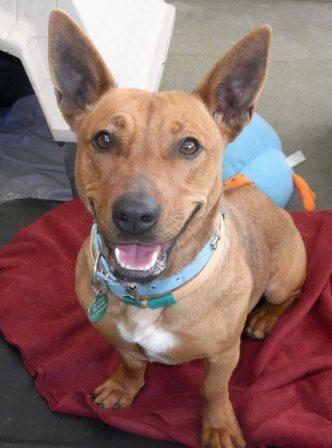
 Mona Vale Hospital Auxiliary Fundraising Dates 2016
Mona Vale Hospital Auxiliary Fundraising Dates 2016
Meetings: First Tuesday of every month at Pittwater RSL Club from 10.30am to 12 noon
Membership is $5.00 per year
2016: 6th September, 4th October, 1st November, 6th December. New Members and visitors always welcome. Ring us on 9979 5115 ... or just turn up
Tuesday, October 18th, 2016. Fundraising fashion parade at Newport Bowling Club, cnr Palm and Barrenjoey Roads. Morning tea is at 10.30am followed by a Donna Lou affordable fashions parade. Raffles and lucky door prizes. $10 entry and all are welcome. Funds raised will purchase equipment for the Mona Vale Hospital and Rehabilitation centres.
October 21st: Mona Vale Hospital foyer Baking, craft, knitting, books
October 28th: Stall, Warriewood Square, Warriewood Knitting, craft, sewing
November 5th: Stall, Pittwater Place, Mona Vale Craft, knitting, books
November 13th: Sausage sizzle, Narrabeen Bunnings car park
November 18th: Stall, Mona Vale Hospital foyer Baking, craft, knitting, books
December 3rd: Stall, Pittwater Place, Mona Vale Craft, knitting, books
December 3rd: Sausage sizzle, Narrabeen Bunnings car park
December 9th: Stall, Warriewood Square, Warriewood Knitting, craft, sewing
December 9th: Stall, Mona Vale Hospital foyer Baking, craft, knitting, books
Opening Night At Hamptons House For Sailors Delights
 The purpose of www.westpittwater.com.au - is best defined by the vision of the West Pittwater Community Association.
The purpose of www.westpittwater.com.au - is best defined by the vision of the West Pittwater Community Association.
To be a supportive community, encouraging and promoting civic pride, interest in community affairs and goodwill amongst residents.
To protect local fauna and flora and generally preserve West Pittwater and its environs.
To secure essential facilities including public wharves and reserves and to protect private and public property.
To speak with one voice and represent the interests of the Western Foreshore community when in discussion with Pittwater Council and other relevant government bodies. The WPCA website provides a forum for the better realisation of these objectives. Visit: www.westpittwater.com.au
October 2 - 8, 2016: Issue 283
Articles This Week
Front Page Issue 283: Pittwater!
Seal Rests On North Avalon Rockshelf After Shark Attack - please contact ORRCA on 02 9415 3333 if seen again
Lock Crowther Multihull Regatta 2016: hosted by RMYC Multihull Division
Upgraded Sports Centre Officially Opened - at Warriewood
Grey Headed Flying Foxes by Kayleigh Greig
Aquatics: BL's Blast Off 2016 - reports, pictures, links to albums
Pictures: A Pittwater Mix:October 2016 - lots of colour from this week
Park Bench Philosopher: Saving Grevillea Calyi: 2016 Update
Profile: Dave Whiteman - Dave Whiteman is our October Artist of the Month and shares a few tales of Newport during the 1950's as first Profile of the Week for the second month of Spring 2016.
A former policeman and current Chairman Northern Metropolitan Retired Police Association Executive, Dave has seen a lot of changes and contributed more than many know to saving lives.
History: Pittwater Heroes and Heroines I: Dr. Isobel Ida Bennett AOwas one of Australia's best-known marine biologists. She assisted Prof. William John Dakin with research for his final book, Australian Seashores, regarded by many as "the definitive guide on the inter-tidal zone, and a recommended source of information to divers".
Artist of the Month: October 2016 Dave Whiteman - A wonderful photographer whose Landscapes,Portraits and Fashion Photography will mesmerise, Dave also flies. He recently took some lovely photos of resplendent Pittwater from her blue skies which feature on this Issue's Front Page
Search Pittwater Online News:
Upgraded Sports Centre Officially Opened
30 September 2016
Member for Pittwater Rob Stokes today officially opened the expanded Northern Beaches Indoor Sports Centre at Warriewood.
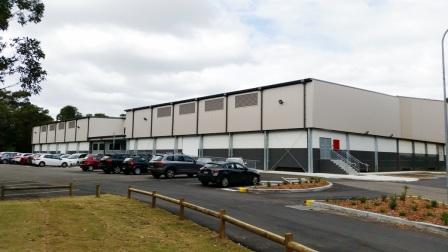
The $3.4 million project has increased the number of multi-purpose courts from four to six and seen the addition of improved spectator facilities, modern equipment and amenities.
The centre is used by thousands of participants every week, including basketballers, netballers, volleyballers and school students, and is now the largest indoor sports centre of its type in Sydney.
“This is a fantastic upgrade that will provide real benefits to our community,” Rob Stokes said.
“There’s been an enormous amount of work undertaken to see this project become a reality.
“The centre had become a victim of its own success and extra space was needed to help cater for increasing demand.
“This project has been a great example of cooperation between different levels of government, key local sporting organisations and the centre’s passionate Directors.
“To have an all-weather facility of this scale in our community opens up really exciting opportunities.
“It’s particularly beneficial for students of Narrabeen North Primary School and Narrabeen Sports High School who have direct access to this multi-million dollar facility.
“Congratulations to everyone involved in the delivery of this incredibly important project,” Rob Stokes said.
Draft Mona Vale Place Plan
Partial Closure Of Fairfax Lookouts Due To Cliff Cracks At North Head
Rockfall At North Head
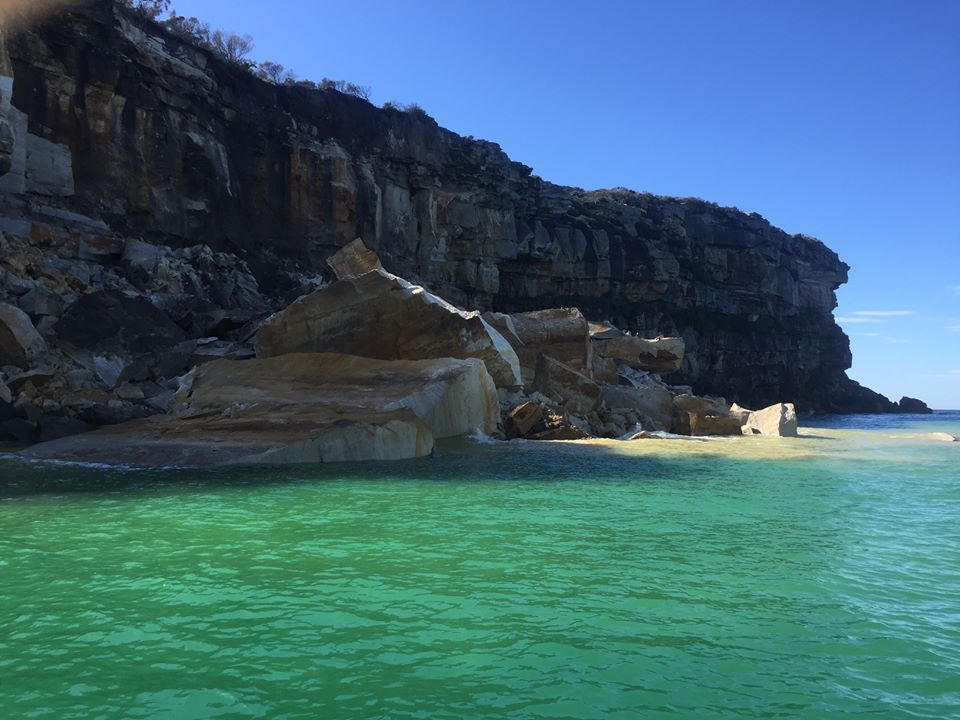
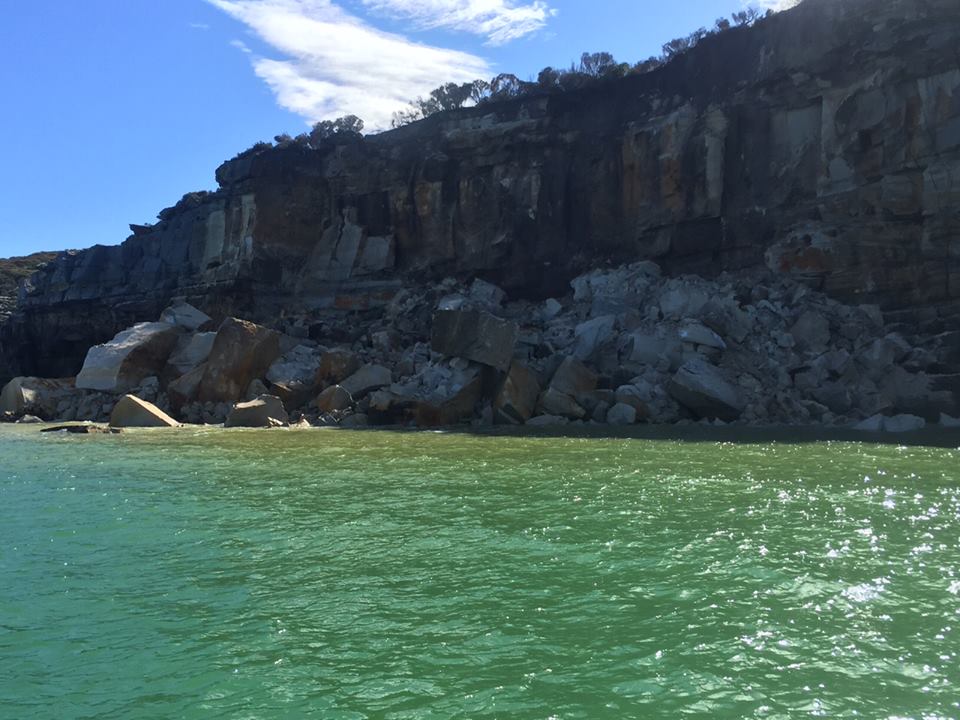
Beyondblue Bash - BBQ Fundraiser
 Wednesday, October 5 at 7AM - 5 PM-
Wednesday, October 5 at 7AM - 5 PM- October Is Mental Health Month: Great Speakers At MVL
Palm Beach Updates
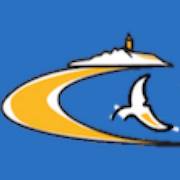 Walkway
WalkwayPalm Beach Walkway Gets $250K Kick-Start
Overshadowing Of Mona Vale’s Village Green

Bayview-Church Point Residents Association Seeking Bayview Baths Photos
 At present they’re seeking photos from residents and those from further afield on the baths.
At present they’re seeking photos from residents and those from further afield on the baths.Avalon Bilgola Amateur Swimming Club
 Season Starts
Season Starts
Pittwater High School Alumni
 September 22, 2016: Pittwater High School
September 22, 2016: Pittwater High School Pittwater High School Reunion

Pittwater Offshore Newsletter Update 1/10/2016
click on Logo:
To contact Julian: editor@scotlandisland.org.au
Funded Training Opportunities In 2016/17 At Northern Beaches Community College


 Northern Beaches Community College
Northern Beaches Community CollegeMona Vale Hospital Auxiliary Needs Kiosk Volunteers
 Please Contact the Kiosk Manager if you can spare a few hours a week, fortnight or month. We'd love you to join us, we're always in need of more volunteers. There are three shifts per day to choose from, weekends as well. Training provided and you are always on a shift with other volunteers, a great way to meet new friends and help towards fundraising for the hospital.
Please Contact the Kiosk Manager if you can spare a few hours a week, fortnight or month. We'd love you to join us, we're always in need of more volunteers. There are three shifts per day to choose from, weekends as well. Training provided and you are always on a shift with other volunteers, a great way to meet new friends and help towards fundraising for the hospital. Fashion Parade For Mona Vale Hospital
Hunters Hill Is Still Fighting
Warringah Rugby Club 2016 Award Winners
Superannuation Reform: Second Tranche Of Exposure Draft
Grants Available For Emergency Relief Projects

Northern Beaches Environment Alliance October Meeting
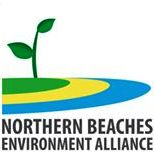 Thank you to our special guests from Stand with Bulga to protect heritage from coal mining for speaking at our recent meeting. Thank you to our special guest speakers Rob and Anne Maree McLaughlin from Bulga NSW for attending this month's Northern Beaches Environment Alliance meeting on Tuesday September 6 at the Northern Beaches Coastal Environment Centre in Narrabeen.
Thank you to our special guests from Stand with Bulga to protect heritage from coal mining for speaking at our recent meeting. Thank you to our special guest speakers Rob and Anne Maree McLaughlin from Bulga NSW for attending this month's Northern Beaches Environment Alliance meeting on Tuesday September 6 at the Northern Beaches Coastal Environment Centre in Narrabeen.Friends Of Bungan Beach Restoration
Bungan Beach's superb backdrop of bushland is being cared for by donations from the Pittwater Environmental Foundation (PEF) and the determination and hard work of local people who love this wonderful place. Volunteers and contractors remove weeds and plant native plants where natural regeneration is unlikely because of dense weeds for many years.
Can you lend a hand to Friends of Bungan? go tohttp://www.friendsofbungan.org.au/about-us/

Twilight Bazaar At Bayview
Review Of Local Government Rating System

Join The Pittwater Artists Trail
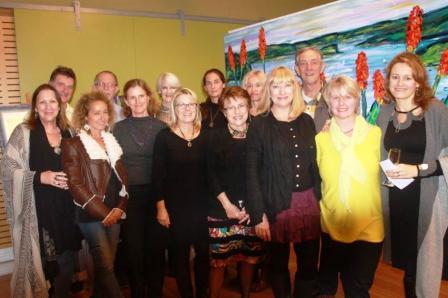
Grey Headed Flying Foxes
All photos by photographer and (awesome) bat carer Sarah Thorpe
.jpg?timestamp=1475223696790)
You may perceive them as blind, blood-sucking, loud, smelly, flying rodents that make nests in peoples’ hair… But these adorable little creatures couldn’t be more different from that description.
Grey-headed flying foxes are the largest bats in Australia, with a wingspan of up to 1.5 metres!
They weigh between 600g and 1kg (about the weight of a pineapple). Their fancy, scientific name is Pteropus poliocephalus (if you want to impress your friends with your esteemed vocabulary).
Other members of the Pteropus family include the little red flying fox, the spectacled flying fox and the black flying fox.
Grey-headed flying foxes are the only Pteropus to have fur that reaches all the way down to their ankles, whereas other species only have fur that reaches their knees. They are also the only Australian flying fox with a reddish brown circle (or collar) of fur around their necks. Their heads are light grey and their bodies are a darker greyish black. They are estimated to live between 12 and 15 years in the wild, but in captivity they have lived as long as 25 years.
Where are they found?
.jpg?timestamp=1475223682458)
Well, you’ll be happy to hear that you can find these precious creatures all over Sydney, all year round. There are bats everywhere! The grey-headed flying foxes are furrier, so they cope better in the cooler climates, from Coffs Harbour to the South Coast. Black flying foxes range from Sydney all the way up to the warmest parts of Queensland. Spectacled flying foxes cope alright in the heat because their fur is quite short, so they are mainly located in Northern Queensland (Townsville to Cairns to Thursday Island)
Little red flying foxes migrate in huge groups and can be found all over the place, and as far West as Wagga Wagga. Though they may not be found all year round in these other places, and we’re not really sure why. It may be due to the need to migrate and find food or it may just be a seasonal thing.
They are native to Australia and definitely aren’t pests. In fact, they are a protected species and should not be intentionally harmed by any human, as this is against the law.
What is their habitat?
Grey-headed flying foxes roost together in large colonies in trees, as they are very social animals.
These trees seem to be very randomly picked, they can be in a backyard, next to a busy road, in melaleuca swamps, rainforests or in banksia woodlands. Most roosting sites are close to water sources such as lakes, rivers, or the beach.
During the day, they all sleep in the trees close together, all wrapped in their own black wings like upside-down ninjas. At night, the adults leave to find food and stretch their wings. They usually travel around 50km to feeding sites, but the longest ever recorded migration in one night was 350km! Babies that haven’t yet developed fur cling to their mother’s underside as she flies around, but older babies (about 4-5 weeks old) with all their fur are left in maternal camps to be nursed until - after about 12 weeks - they become independent.
What do they eat?
.jpg?timestamp=1475223740044)
Flying foxes are frugivores and nectarvores, meaning that they feed on fruit, pollen and nectar from flowers. While they mostly eat from native plants, they occasionally eat from introduced species as well. Their main food sources are from Eucalyptus, Melaleuca and Banksia flowers, but they eat from around 187 different plant species. Their favourite fruits are from lilli-pillies and figs.
Occasionally, the foxes eat from cultivated fruits if they can’t find other food due to habitat loss. If bats are eating from your garden, the best way to protect your fruit is to use wildlife-safe netting: www.wildlifefriendlyfencing.com and they deliver straight to your house too!
This wildlife-friendly netting has hole-spacing no wider than 4-5mm, so the bats don’t get their claws stuck in the gaps, which could lead to starvation or strangulation.
What do they do for the environment?
Bats play a critical role in pollination. When feeding, pollen gets stuck to their fur and as they move around, the pollen brushes off onto other flowers, helping them to grow more flowers. Bats also spread plant seeds throughout forests, helping to regrow damaged environments. They have a remarkably quick digestion rate of 20 minutes, so when pollen and seeds are ingested, they are quickly spread throughout the forest.
.jpg?timestamp=1475223762138)
Their role in pollination is even more important as that of birds and insects as they feed on different plants and support different plant species. Bats have the ability to migrate over vast expanses of land, and without them, the forests WILL die as the birds and insects just can’t cover enough area of the huge amounts of vegetation here in Australia.
Bats are also a key food source for animals such as pythons, goannas, birds of prey (like sea eagles) and, in other areas, crocodiles.
What threats do they face?
Sadly, bats face many issues. Grey-headed flying foxes are listed as ‘vulnerable to extinction’ on the IUCN Red List of Endangered Species. They suffer the effects of habitat loss and, as such, are often harassed or shot by farmers when they are forced to resort to eating from orchards and cultivated foods. There are estimations that over 100,000 are illegally shot every year.
Unfortunately, some farmers are given legal permission to shoot flying foxes as well, but the shooting isn’t regulated. They are legally allowed to shoot 50 bats per night, but this limit is often exceeded. The bats that do get shot often don’t die immediately and they suffer horrendous wounds and die slowly on the ground.
They are dispersed from their homes using loud noises such as banging, loud machinery, gas guns, water cannons and stock whips just because they are described as loud and smelly, which I find to be somewhat hypocritical. Babies (pups) can also be left at the site in the panic to get away and will die alone, orphaned.
They are threatened by heatwaves caused by Climate Change, as flying foxes find it very difficult to cope in warmer temperatures and can literally fall dead to the ground from heat-stress.
Since 1994, over 24,500 grey-headed flying foxes have died from extreme heat events alone.
Bats are also victims of electrocution between powerlines, which can kill both mothers and their babies clinging to them. Often the pups can survive, though, but are left badly burnt and dangle from their mother’s carcass without food or shelter. It’s important to call your local Wildlife Rescue organisation if you see a dead bat on powerlines.
Bats also face competition for food and habitat from other species such as nectar-eating birds like lorikeets.
Many bats are perceived as pests or rodents due to the fact that some bats contract viruses such as Australian Bat Lyssa Virus. The virus is highly contagious through blood and saliva and any bats who catch it die quickly. Even so, less than 1% of the bats actually get the the virus at any one time and it’s pretty obvious when they have it, due to their sluggish behaviour and other prominent symptoms. The virus can be vaccinated against and is completely preventable.
What can I do to help the bats?
There is no doubt that this species is in need of help. You can start by not supporting any bat dispersals which cause stress and death to the bats. If you have a camp of bats near you and you have a weird paranoia of getting sick from Lyssa Virus, you could consider get vaccinated. If they’re too loud and you can’t sleep at night, you could install double-pane windows and use earplugs when you sleep. If you think they smell, you could consider getting air-freshener in your house and plant lots of sweet-smelling plants in your garden.
You can donate to charities that help bats, such as Sydney Wildlife, Wires and batconservation.org or better yet, join them and help rescue and rehabilitate the injured, orphaned or sick flying foxes.
Bats are badly affected by Climate Change and you can help by not contributing to this global crisis. Don’t litter, save energy and be generally as eco-friendly as possible.
Use wildlife-friendly fruit-tree netting so animals don’t get tangled in it.
Don’t forget to encourage your friends to be aware of the problems that bats face.
Common Myths:
• Flying Foxes do not make nests out of peoples’ hair. They don’t even make nests!
• They don’t suck blood. The only bat species that sucks blood is the Vampire Bat, and they don’t drink human blood, nor do they live in Australia.
• Flying Foxes aren’t blind. In fact, they have ten-times better eyesights than humans!
• Bats are not pests. They are a vulnerable species protected by the law and are native to Australia.
• Bats don’t shriek and wail to be scary, they chat to be sociable, and their noise levels are no different to that of a room filled with people.
All in all, it can be safely said that flying foxes are some of the cutest and most valuable crittersthat Australia has to offer and certainly should not be disregarded. Join the BATtalion of flying foxlovers and keep an eye out for our fauna!
by Kayleigh Greig
Gone Fishing Gallery at Waterfront Store Church Point
Open again TODAY in the top room Waterfront Store. Open mainly weekends as an addition to the waterfront cafe. Keep up to date on theirFacebook page

Everyone's Opinion Crucial - Sportsground Strategy And Golf Course Review
- Commence community engagement including with golf, sports codes October 2016
- Discussion paper to inform Sportsgrounds Strategy and Golf Courses Review for community consultation, November 2016
- Report to Council with recommendations arising from community engagement for the future of District Park and requesting approval to exhibit the Draft Sportsgrounds Strategy, March 2017
- Public exhibition of Draft Sportsgrounds Strategy, April 2017
- Report to Council requesting adoption of the Final Sportsgrounds Strategy, May 2017
EPA Seeking Information To Catch Bird Killer
Boat Trailer Storage Grants Program
- enhance the boating experience in NSW by improving the overall capacity and amenity of boating infrastructure on NSW waterways, informed by direct engagement with local boaters.
- ensure local boaters see a greater return from their registration and licence fees through improvements to local boating facilities.
- deliver projects through effective partnership arrangements with Councils and other organisations.
- deliver important projects identified through the Regional Boating Plans, not just wait for Councils to apply for funding grants.
Help Create A Vision For The Northern Beaches
$10.2M Major Road Upgrade To Begin In Warriewood
Community Engaged And Ready For Participation
- Affordable Housing
- Economic Development and Tourism
- Place Making
- Natural Environment
- Waste and Recovery Management
- Sustainable Transport
- Art, Culture and Heritage
- Community Safety
- Inclusive Communities
- Open Space and Recreation
- Youth
Fridge Buyback Scheme Cooling Power Bills
Dog Day By The Bay 2016
Become A Native Bee Keeper!
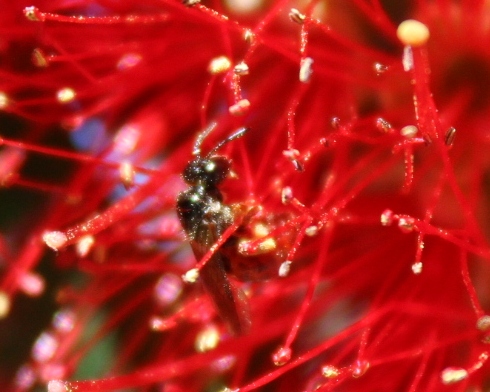
- how to encourage native bees into the garden
- how to keep native stingless social bees in hives
- hive management including design and protection from natural enemies
- how to use them for pollination and honey production.
Work Continuing On Mona Vale Road East And West Upgrade
Sydney Wildlife Mobile Clinic Fundraiser
Sydney Wildlife Mobile Clinic Fundraiser Online Auction Items
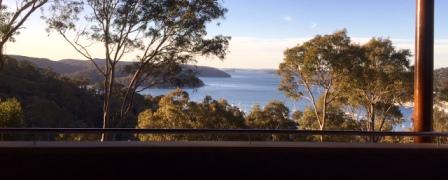
Northern Beaches Council Draft Implementation Plan
- provide a clear framework for implementation of the Northern Beaches Council
- ensure that the process of building a new organisation is well organised and carefully considered, and
- effectively communicated to staff and the community.
Flare Demonstration
 Marine Rescue Broken Bay Unit will be conducting a Flare Demonstration at Marine Rescue Broken Bay. Saturday 22nd October at 9am at Marine Rescue, Rowland Reserve, Bayview.
Marine Rescue Broken Bay Unit will be conducting a Flare Demonstration at Marine Rescue Broken Bay. Saturday 22nd October at 9am at Marine Rescue, Rowland Reserve, Bayview.Bonnie Boezeman AO To Be Guest Speaker At Zonta “Empowering Women” Dinner
 The Zonta Club of Northern Beaches Inc, with the Mackellar Girls ZClub, will host the annual “Empowering Women” Dinner on Thursday 20 October at the Dee Why RSL Club. The guest speaker will be Bonnie Boezeman AO.
The Zonta Club of Northern Beaches Inc, with the Mackellar Girls ZClub, will host the annual “Empowering Women” Dinner on Thursday 20 October at the Dee Why RSL Club. The guest speaker will be Bonnie Boezeman AO.
Pet of the Week
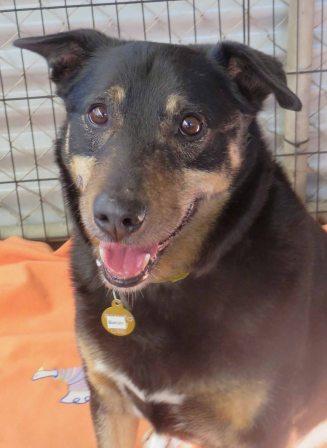
 Mona Vale Hospital Auxiliary Fundraising Dates 2016
Mona Vale Hospital Auxiliary Fundraising Dates 2016
Meetings: First Tuesday of every month at Pittwater RSL Club from 10.30am to 12 noon
Membership is $5.00 per year
2016: 6th September, 4th October, 1st November, 6th December. New Members and visitors always welcome. Ring us on 9979 5115 ... or just turn up
Tuesday, October 18th, 2016. Fundraising fashion parade at Newport Bowling Club, cnr Palm and Barrenjoey Roads. Morning tea is at 10.30am followed by a Donna Lou affordable fashions parade. Raffles and lucky door prizes. $10 entry and all are welcome. Funds raised will purchase equipment for the Mona Vale Hospital and Rehabilitation centres.
October 21st: Mona Vale Hospital foyer Baking, craft, knitting, books
October 28th: Stall, Warriewood Square, Warriewood Knitting, craft, sewing
November 5th: Stall, Pittwater Place, Mona Vale Craft, knitting, books
November 13th: Sausage sizzle, Narrabeen Bunnings car park
November 18th: Stall, Mona Vale Hospital foyer Baking, craft, knitting, books
December 3rd: Stall, Pittwater Place, Mona Vale Craft, knitting, books
December 3rd: Sausage sizzle, Narrabeen Bunnings car park
December 9th: Stall, Warriewood Square, Warriewood Knitting, craft, sewing
December 9th: Stall, Mona Vale Hospital foyer Baking, craft, knitting, books
Opening Night At Hamptons House For Sailors Delights
 The purpose of www.westpittwater.com.au - is best defined by the vision of the West Pittwater Community Association.
The purpose of www.westpittwater.com.au - is best defined by the vision of the West Pittwater Community Association.
To be a supportive community, encouraging and promoting civic pride, interest in community affairs and goodwill amongst residents.
To protect local fauna and flora and generally preserve West Pittwater and its environs.
To secure essential facilities including public wharves and reserves and to protect private and public property.
To speak with one voice and represent the interests of the Western Foreshore community when in discussion with Pittwater Council and other relevant government bodies. The WPCA website provides a forum for the better realisation of these objectives. Visit: www.westpittwater.com.au
Mona Vale Library Seeking Pictures
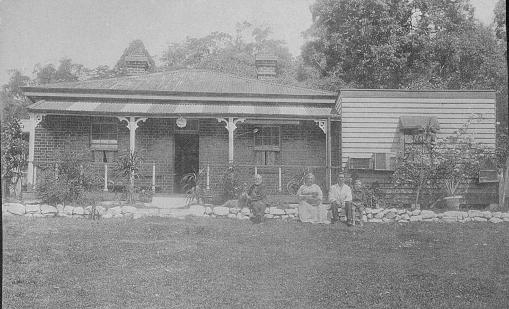
‘ARTISTS’ BOOKS AWARD’ Competition Now Open
Manly Artist Seeking Plastic Bottle Caps For Children’s Mural
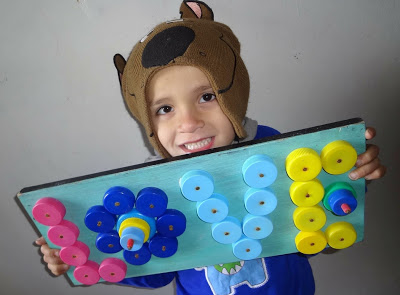
New Season for Sailability Pittwater
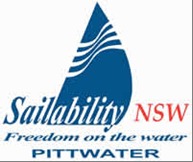
Sailability Pittwater is a volunteer organisation which provides sailing for people with a disability. Our main recreational sailing activities are at Rowland Reserve, Bayview, and we run competitive sailing for people with a disability out of RPAYC Newport.
We are currently looking for new volunteers for our Saturday morning program at Rowland Reserve and Tuesdays at RPA. Visit our website for more information at www.sailability.org/au/pittwater or call John on 9982 5656
 Bushcare in Pittwater
Bushcare in Pittwater
For further information or to confirm the meeting details for below groups, please contact Council's Bushcare Officer on 9970 1367
Where we work Which day What time
Avalon
Angophora Reserve 3rd Sunday 8:30 - 11:30am
Avalon Dunes 1st Sunday 8:30 - 11:30am
Avalon Golf Course 2nd Wednesday 3 - 5:30pm
Careel Creek 4th Saturday 8:30 - 11:30am
Toongari Reserve 3rd Saturday 9 - 12noon (8 - 11am in summer)
Bangalley Headland 2nd Sunday 9 to 12noon
Bayview
Winnererremy Bay 4th Sunday 9 to 12noon
Bilgola
North Bilgola Beach 3rd Monday 9 - 12noon
Algona Reserve 1st Saturday 9 - 12noon
Plateau Park 1st Friday 8:30 - 11:30am
Church Point
Browns Bay Reserve 1st Tuesday 9 - 12noon
McCarrs Creek Reserve Contact Bushcare Officer To be confirmed
Clareville
Old Wharf Reserve 3rd Saturday 8 - 11am
Elanora
Kundibah Reserve 4th Sunday 8:30 - 11:30am
Mona Vale
Mona Vale Beach Basin 1st Saturday 8 - 11am
Mona Vale Dunes 2nd Saturday+3rd Thursday 8:30 - 11:30am
Newport
Bungan Beach 4th Sunday 9 - 12noon
Crescent Reserve 3rd Sunday 9 - 12noon
North Newport Beach 4th Saturday 8:30 - 11:30am
Porter Reserve 2nd Saturday 8 - 11am
North Narrabeen
Irrawong Reserve 3rd Saturday 2 - 5pm
Palm Beach
North Palm Beach Dunes 3rd Saturday 9 - 12noon
Scotland Island
Catherine Park 2nd Sunday 10 - 12:30pm
Elizabeth Park 1st Saturday 9 - 12 noon
Pathilda Reserve 3rd Saturday 9 - 12 noon
Warriewood
Warriewood Wetlands 1st Sunday 8:30 - 11:30am
Whale Beach
Norma Park 1st Friday 9 - 12noon
Western Foreshores
Coopers Point, Elvina Bay 2nd Sunday 10 - 1pm
Rocky Point, Elvina Bay 1st Monday 9 - 12noon

